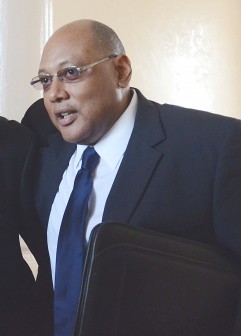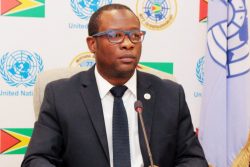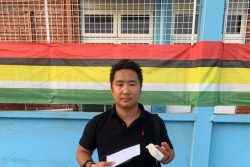2015 bauxite production figures reflecting performances that either exceed or come close to matching targeted expectations have once again failed to disguise the fact that Guyana’s industry is swimming against a tide of weak global demand and high recovery costs, Natural Resources Minister Raphael Trotman says.
Figures released to this newspaper earlier this week indicate that between January and November last year the majority Chinese-owned Bosai Minerals Group Company Inc. realized an overall bauxite production figure of 320,788 tonnnes valued at US$56.863 million (production figures for December were unavailable up to earlier this week). The vast majority of Bosai’s bauxite earnings came from its production of the industry’s Refractory ‘A’ Grade Super Calcined (RASC) Bauxite which yielded 122,219 tonnes valued at US$41.621 million. Aluminous Cement Grade Bauxite (AGB) accounted for 24,154 tonnes valued at US$8.225 million while Calcined Grade Bauxite yielded 76,247 tonnes valued at US$3.067 million. Cement Grade Bauxite accounted for 92,276 tonnes of Bosai’s overall 2015 production valued at US$3.712 million while Metallurgical Grade Bauxite accounted for 5,892 tonnes valued at US$237,026. Overall, for the first eleven months of last year, Bosai mined a total of 320,788 tonnes of bauxite valued at US$56.863 million.

Production figures for the majority Russian-owned Bauxite Company of Guyana Inc. indicate that it mined a total of 953,917 tonnes of Cement Grade Bauxite valued at US$37.541 million and 72,418 of Calcined Grade Bauxite valued at US$2.849 million. Production of Metallurgical Grade Bauxite yielded 120,869 tonnes valued at US$4.756 million. Overall bauxite production for 2015 totalled 1,467,996 tonnes valued at US$106.768 million.
Closer assessment of the performance of the sector revealed that in most instances the two operating companies either came close to achieving their production targets, or else, exceeded them. In the instance of RASC the sector realized 81.87% of its original target of 149,291 tonnes while in the case of AGB actual production of 24,254 tonnes exceeded projected production of 15,362 tonnes by 57.23%. Last year, Calcined Bauxite achieved 90.47% of its projected production target of 164,320 tonnes of bauxite while Metallurgical Grade Bauxite realized 73.89% of its overall target of 1,299,000 tonnes.
Trotman told Stabroek Business that low market prices aside, the profitability of the industry continued to be affected by other factors including production costs including the traditional high cost of removing overburden even though continually falling oil prices served as a mitigating factor. “Given the high quality of our bauxite the demand out there will always be high though factors such as global prices and production costs must be taken account of,” the Natural Resources Minister told Stabroek Business.
According to Trotman, government continued to be aware of its manifesto promise regarding the setting up of an Alumina Plant though he said that the availability of power continued to be a key consideration in pursuit of such a project. Asserting that hydropower remains the “quickest route” to addressing the country’s energy problems he alluded to a likely prospect at Eclipse Falls though he did not rule out other options. “As far as Amaila Falls is concerned government has not rejected the site as a suitable location for hydropower. It is the economic model that we have a difficulty with,” Trotman said.
Meanwhile, according to Trotman, there is need to explore the logistics of bauxite transshipment to render operations more efficient and that there had been discussions regarding the possible consideration transshipment of bauxite from Region Ten through Berbice and some form of collaboration between the two bauxite companies regarding the possible sharing of the Oldendorff transshipment facility even though he was unable to say how far such an idea might go.
At the same time, according to Trotman, “the government continues to take seriously the country’s potential for energy generation through solar farms.” He said that a number of “sound proposals” had been received from several countries in North America and Asia as well as others from Barbados and French Guiana.









